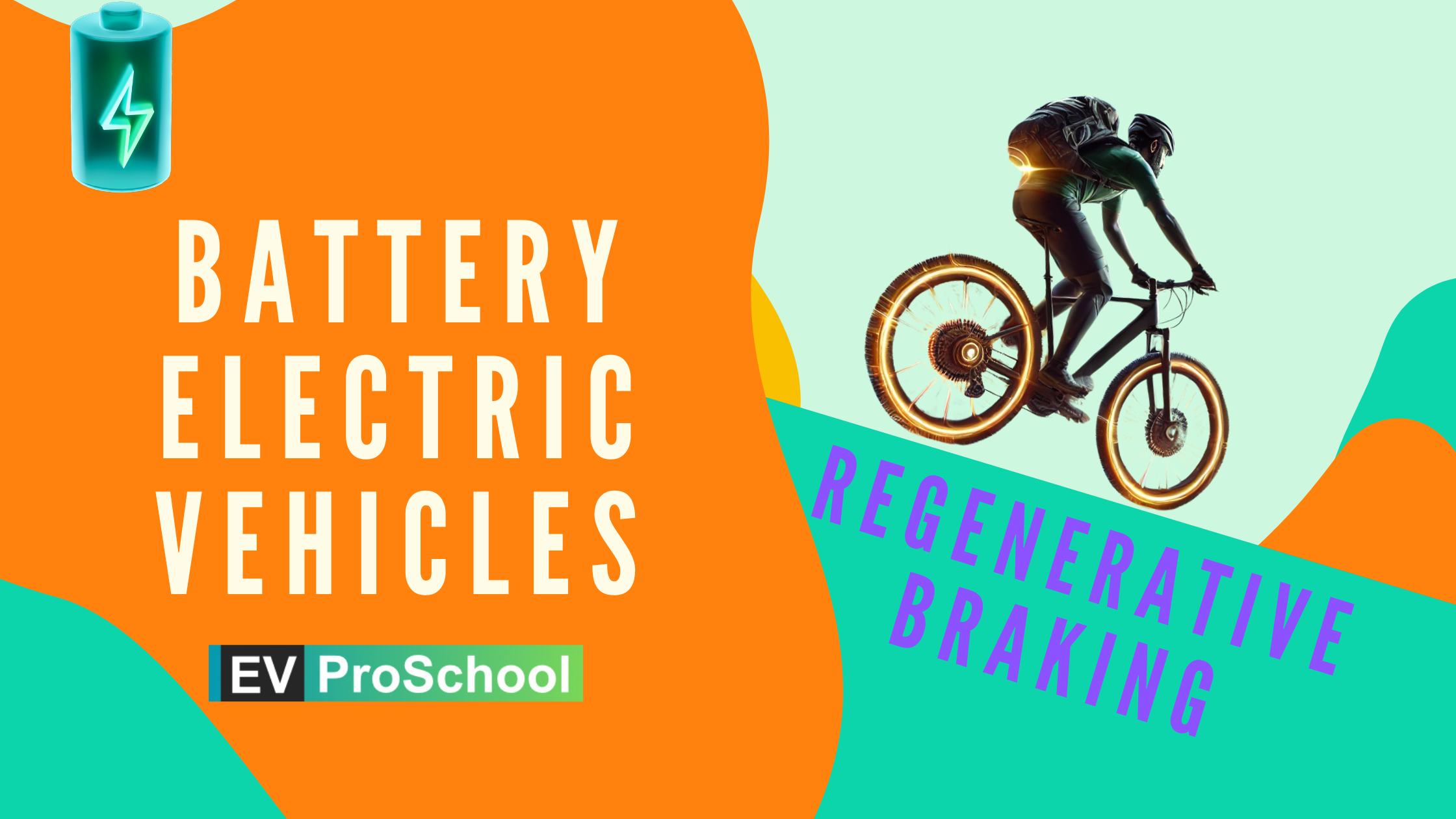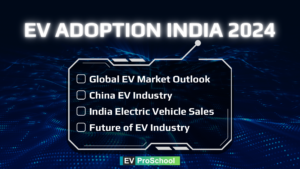Imagine a Bike that recharges itself every time you apply the brakes—a concept unheard of in traditional internal combustion (IC) vehicles.
With cutting-edge technologies, reduced reliance on fossil fuels, and innovative energy recovery systems, battery electric vehicles (BEVs) use regenerative braking to convert wasted energy back into power. This system is far more efficient than traditional cars and represents a crucial step toward sustainable technology, reducing carbon emissions and helping to keep Earth’s temperature in check for the future of our planet.
In this post, we’ll explore the energy efficiency and flow in battery electric vehicles (BEVs), the working principle of regenerative braking, and its different levels. We’ll also discuss why EVs are recommended not to be tow breakdowns due to regen braking, the logic behind it, and how BEVs contribute to global sustainability goals.
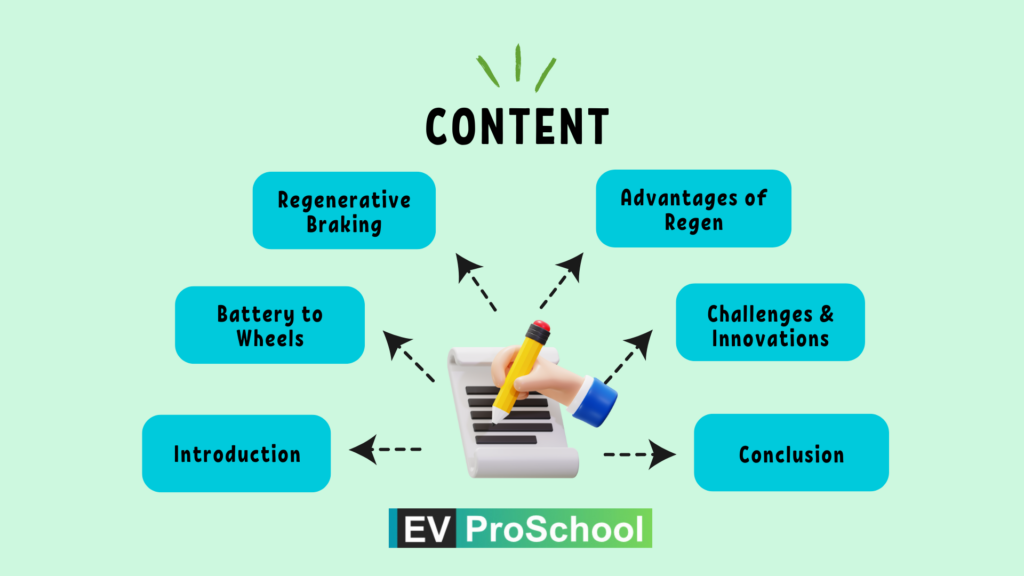
Energy Flow in BEVs: From Battery to Wheels
Battery to Controller (Inverter) :
In battery electric vehicles (BEVs), energy flow begins with the battery, which serves as the energy storage unit, much like a fuel tank in traditional vehicles. The battery stores energy in the form of chemical energy, which is converted into electricalenergy when needed. This is the first step in the energy conversion process—chemical energy becomes electrical energy to power the Motor
Controller to Motor:
Once converted, the electrical energy flows to the inverter, which transforms the battery’s DC (direct current) output into a three-phase AC (alternating current) waveform suitable for powering the motor. The inverter uses advanced control algorithms and switching MOSFETs (transistors) to manage this process. These algorithms decide how much power the motor requires, at what rate, and based on the vehicle’s demand, ensuring efficient power delivery.
Motor to Wheels:
The motor receives the regulated power from the inverter, and this power drives the motor to rotate. The motor’s rotation is transmitted through the vehicle’s transmission system, ultimately turning the wheels. The rotational speed of the wheels is reflected as the vehicle’s speed on the dashboard. This entire process showcases the seamless flow of energy—from the battery to the motor and, finally, to the wheels—powering the vehicle efficiently.
Read More: BEV Essentials: Insights into Battery, Motor & Controller
The Role of Regenerative Braking
What is Regenerative Braking:
Regenerative braking captures the kinetic energy (1/2 * mass * velocity square) of a moving vehicle during braking and converts it back into electrical energy, which is stored in the battery. Helps to increase BEVs efficiency by utilizing energy that would otherwise be wasted as heat in traditional braking systems.
Comparison with Traditional Braking Systems:
| Feature | Regenerative Braking | Traditional Braking |
|---|---|---|
| Energy Use | Converts kinetic energy to electricity, stored in the battery. | Converts kinetic energy to heat, wasted. |
| Efficiency | Increases vehicle efficiency by recovering energy. | No energy recovery, lower efficiency. |
| Wear and Tear | Reduces wear on brake pads and wheels. | Causes significant wear, needing replacements. |
| Cost | Higher cost due to advanced systems. | Simpler and cheaper to maintain. |
| Suitability | Best for EVs and hybrids in stop-and-go traffic. | Works for all vehicles in any condition. |
Advantages of Regenerative Braking
Improved Energy Efficiency
For instance, in a three-wheeler application, regenerative braking increased the range by nearly 25%, especially in city driving conditions where frequent acceleration and deceleration occur. It also reduces wear and tear on brake pads and wheels, lowering maintenance costs. However, its effectiveness depends on driving conditions—regenerative braking is less effective during constant-speed driving or when braking is infrequent. [Ref]
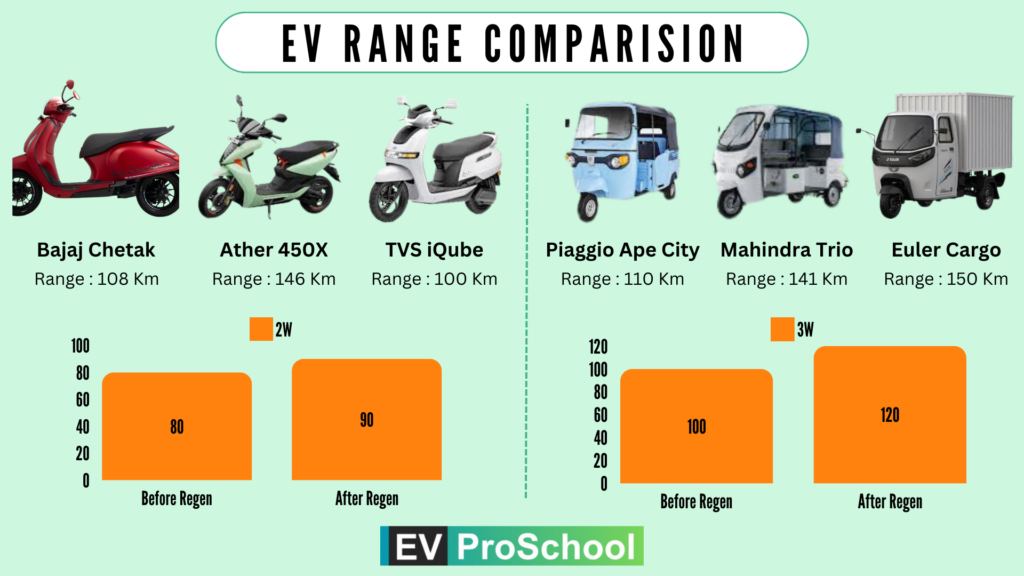
Reduced Wear and Tear
Enhanced Lifespan: Regenerative braking reduces reliance on frictional brakes, slowing vehicles smoothly and minimizing tire wear. This extends tire life by 5,000 to 10,000 km and increases bra. ke durability, leading to fewer replacements and lower maintenance costs.
Cost Savings: With the average tire costing ₹20,000 to ₹40,000, fewer replacements mean significant savings over a vehicle’s lifespan. This makes EV ownership more economical while enhancing performance and sustainability.
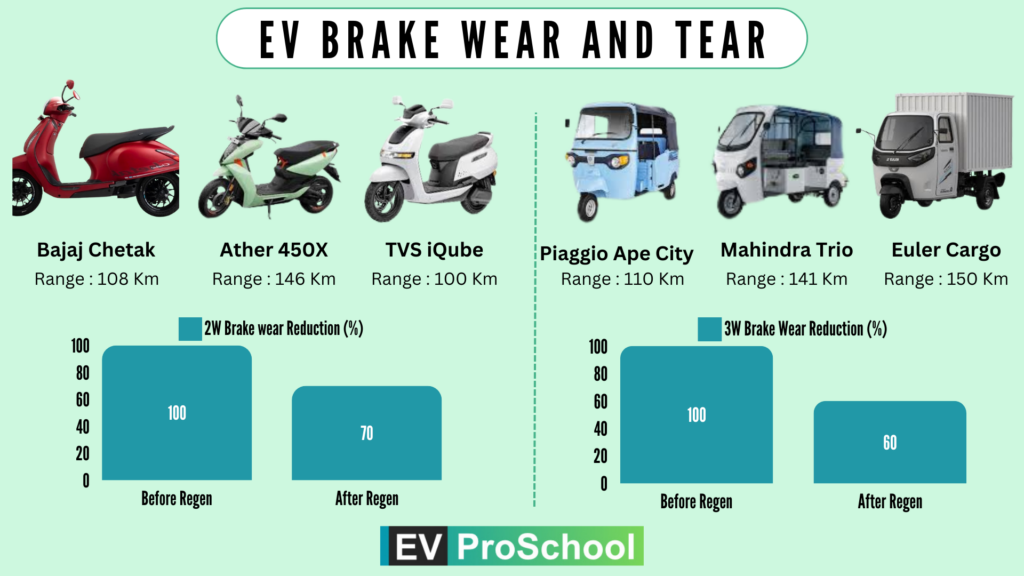
Challenges and Innovations
Limitations of Regenerative Braking:
Regenerative braking is more suitable for larger vehicles like buses and four-wheelers, which have higher mass and velocity, allowing them to recover more energy. These vehicles also have larger battery capacities to store the sudden surge of energy generated during braking. In two-wheelers, regenerative braking is often omitted due to the cost of the specialized controllers required, as well as the differing driving behaviors of two-wheelers.
Impact of Battery State of Charge (SOC):
Regenerative braking is less effective when the battery is at a high state of charge (SOC). A fully charged battery cannot store additional energy, which may cause excess current that could damage components. In such situations, friction braking is necessary to safely stop the vehicle. This highlights the need for a balanced braking system to handle various driving and battery conditions effectively.
Conclusion:
- BEV Energy flow: Battery to Inverter, Inverter to Motor & then Motor to wheels.
- Regenerative Braking: Kinetic Energy to Electrical Energy. Meanwhile increases efficiency and support sustanability
“Curious about owning a BEV? Discover how these innovative vehicles can transform your driving experience and help the planet!”
